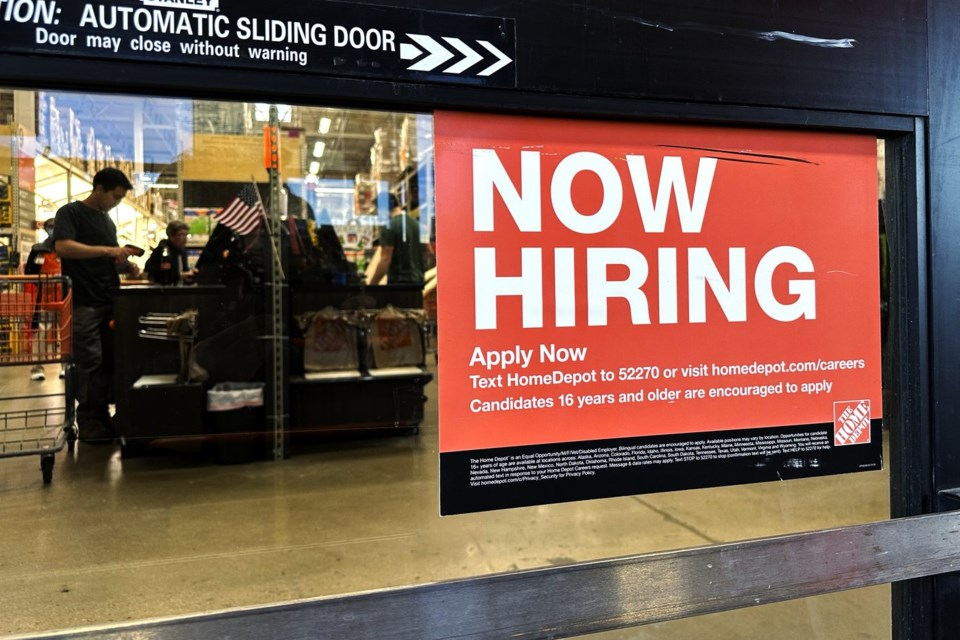WASHINGTON (AP) — The number of Americans filing for jobless benefits rose modestly last week, a sign that employers still retaining workers despite economic uncertainty related to U.S. trade policy.
Jobless claims for the week ending Aug. 2 rose by 7,000 to 226,000, the Labor Department reported Thursday, slightly more than the 219,000 new applications that economists had forecast.
The report is the first government labor market data release since Friday’s grim July jobs report sent financial markets spiraling downward, spurring President Donald Trump to fire the head of the agency that tallies the monthly jobs numbers.
Weekly applications for jobless benefits are seen as a proxy for U.S. layoffs and have mostly settled in a historically healthy range between 200,000 and 250,000 since COVID-19 throttled the economy in the spring of 2020.
It was just the second time in eight weeks that jobless benefit applications rose.
While layoffs remain low by historical standards, there has been noticeable deterioration in the labor market this year.
Last week, the government reported that U.S. employers added just 73,000 jobs in July, well short of the 115,000 expected. Worse, revisions to the May and June jobs figures shaved a stunning 258,000 jobs off previous estimates and the unemployment rate ticked up to 4.2% from 4.1%.
“The ‘no hire/no fire’ theme in the labor market remains firmly intact,” analysts for Jeffries wrote in a note to clients.
Many economists contend that Trump’s erratic tariff rollout in April created uncertainty for employers, who have grown reluctant to expand their payrolls.
Friday's grim jobs report raised the ire of Trump, who alleged that the data was manipulated for political reasons and ordered the firing of Erika McEntarfer, the head of the Bureau of Labor Statistics, which produces the monthly jobs figures.
The firing was roundly criticized by economists, who, along with Wall Street investors, have long considered the job figures reliable. Stock and bond markets often react sharply when they are released.
U.S. markets recoiled at last week’s jobs report, with the Dow Jones Industrial Average tumbling more than 600 points on Friday.
The BLS does not contribute to the weekly unemployment benefits report except to calculate the annual seasonal adjustments that account for changes in weather, holidays, and school schedules.
The Department of Labor’s Employment and Training Administration collects the weekly unemployment insurance claims reported by each state.
There was another indicator that the labor market is softening in a government report last week that revealed employers posted 7.4 million job vacancies in June, down from 7.7 million in May. The number of people quitting their jobs — a sign of confidence in finding a better job — fell in June to the lowest level since December. Hiring also fell from May.
Yet major companies have announced job cuts this year, including Procter & Gamble, Dow, CNN, Starbucks, Southwest Airlines, Microsoft, Google and Facebook parent company Meta. Most recently, Intel and The Walt Disney Co. announced staff reductions.
The deadline on most of Trump’s stiff proposed taxes on imports kicked in on Thursday, though some deals have been made and other deadlines to negotiate have been extended. Unless Trump reaches deals with countries to lower the tariffs, economists fear they could act as a drag on the economy and spark another rise in inflation.
Thursday's report also showed that the four-week average of claims, which smooths out some of the week-to-week volatility, fell by 500 to 220,750.
The total number of Americans collecting unemployment benefits for the previous week of July 26 jumped by 38,000 to 1.97 million, the highest level since November of 2021.
Matt Ott, The Associated Press



